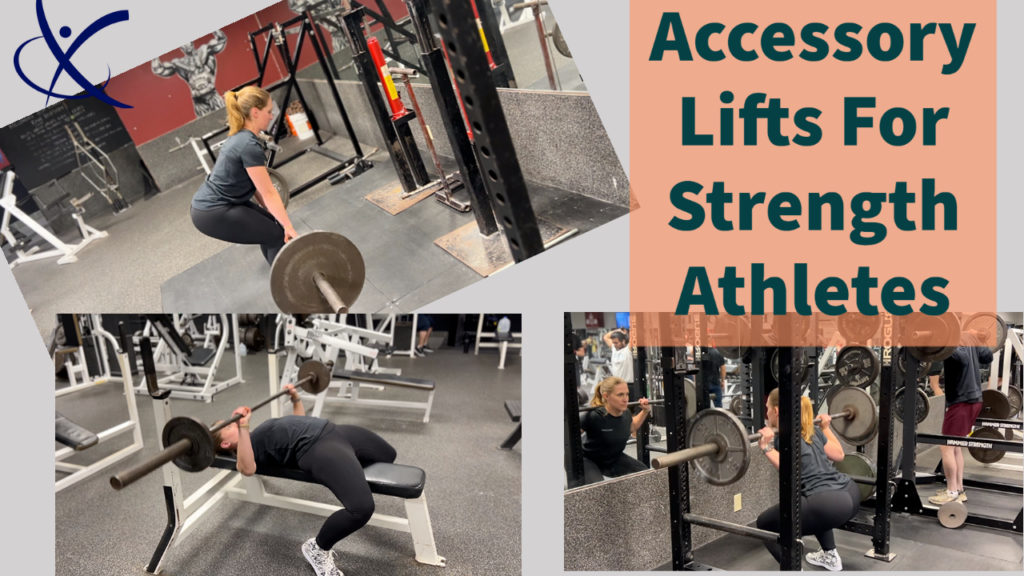It’s Not Always About the Meat and Potatoes.
Before you read this, I have to ask, is this your normal training routine? Squat Variations. Leg Press. Conventional Deadlift. Bench Press. Good Morning.
I know for some of you the answer is yes and for others, you may dabble in “some” other things.
Over the past several years I have been lucky enough to work with many weightlifting athletes. What I can say to you folks, is ya’ll sure do give me a run for my money. I sure do love a good challenge in the clinic, but you powerlifters and oly lifters, you guys and gals are a special breed. Why? Many of you are set in your ways, your lifts, and your training programs. I should say that bodybuilders, you’re a special challenge too.
I preach resiliency in the clinic. I am a firm believer that adding some variety to programming will help you improve your craft but also keep you from getting injured. This is where many weightlifters go wrong. Do you have to have reached peak athleticism to move 500, 600, or 700 pounds? Not necessarily. But can improving your body’s capacity to move quickly, controlled, and in multiple directions hurt you? I don’t think so.
When lifters come to see me for an injury, we often have a lengthy discussion before I enter into a movement screen. This includes a history of training, injury history, current training program, past training programs, dietary considerations, hormone supplementation, lifestyle, sleep, perceived strengths and weaknesses, and more. Why? It provides a lens through which I can develop a bit of a hypothesis about injury status or training needs!
Now, through this conversation, one thing that often comes up is a lack of variability of movements. Athletes and I often discuss their programming being their main lifts in varying frequencies, loads, and intensities. It’s not often that I hear athletes preaching the variability in their program as a key to injury prevention and improving overall capacity. We also discuss movement patterns.
Are you right leg dominant, left leg dominant? What do you look like in the bottom of your squat and out of the hole? Do you lift sumo, conventional, close grip, wide grip? Do you video your lifts regularly and critique your form? Are you ever training lower or upper body single-sided or with a more unilateral focus? Do you perform mobility work? Do you notice your discomfort in a specific point in your lift? Is it only one-sided? Have you ever felt an imbalance in your capability side to side?
More often than not, people can answer these questions. Are they the answers I am always looking for, no; however, most people know they have a stronger leg and arm and their favorite lifting styles. When I ask if they’ve ever tried to lift differently and why not, the answer is often… “I don’t know.”
When I perform an evaluation on a weightlifter, it’s common that I spot an inequality of movement somewhere in their lift. Through further examination, I note muscle imbalances or mobility restrictions. I often notice a variation in quad or hamstring girth, spine mobility, hip mobility, ankle mobility, and so forth. Through these findings, it’s not suspect to find a domineering right or left side. However, what boggles my brain is that weightlifters tend to ignore their inequalities and continue to perform bilateral compound movements. Why is it that these individuals refrain from doing accessory work to prevent or help these things from impacting their lifting abilities?
So, my dear weightlifting friends, I challenge you to add variety to your programming. Add a new and improved warm-up sequence to your lifts. Add some hip, shoulder, and spinal mobility into your programming. Lift unilateral from time to time, whether single-arm presses, rows, step-ups, step-downs or suitcase carries. Perform those little “sissy” moves that I’ll ultimately make you try when you come to PT and you have such a hard time doing them you curse me the entire session!
Remember the 80/20 rule. 80% of your time should be spent in activities specific to your sport, and 20% should be spent elsewhere. What harm is in performing a variety of tasks whether it be cardio, mobility, unilateral strength, explosive strength, and plyometrics from time to time?
Obviously, your accessory work should be related to your needs. So, do some research, video yourself more often, and see what may be missing. I promise you, you’ll ultimately thank me later.
Happy training, friends!
Cheers,
Ashley
